THE GAMES & ESSENTIAL RESOURCES
The Mathematics Pentathlon® Program is organized by Grade Level into 4 Divisions. Within each Division there are 5 Problem-Solving Games and related Resources that deal with a broad spectrum of mathematical thought. Division I was designed for Grades K-1, Division II for Grades 2-3, Division III for Grades 4-5, and Division IV for Grades 6-7.
To share this information with your faculty or parents,
download this Division or all Divisions Description Sheets
Game Description Sheet – Division II (2 – 3)
Game Description Sheets – Div I, II, III & IV (K – 7)
THE GAMES
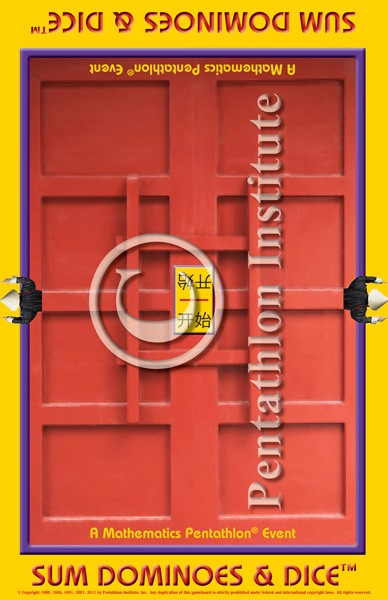 SUM DOMINOES & DICE™
SUM DOMINOES & DICE™
The missing addend model of subtraction, sums and differences through eighteen, algebraic thinking, spatial visualization, and deductive reasoning are concepts/skills that students experience while playing the game of Sum Dominoes & Dice. In this strategy-chance game students search for domino faces in their hands that when attached to faces of dominoes on the gameboard equal the sum that they roll for each turn. The ability to see many different combinations for each dice-roll sum enables students to get rid of all dominoes in their hand (the goal).
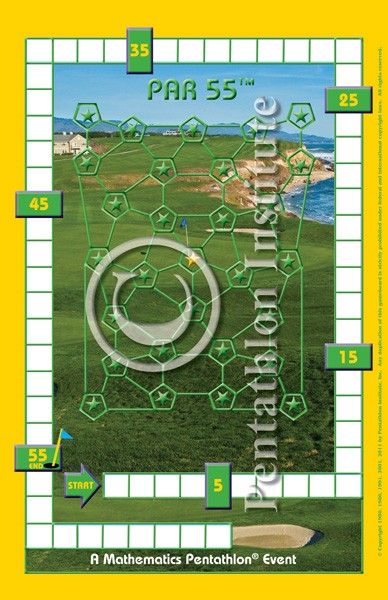 PAR 55™
PAR 55™
This game uses attribute logic blocks to develop students’ multiple classification skills, algebraic thinking, and logical and computational reasoning. The gameboard is comprised of connected pentagon bases upon which students place attribute blocks that are connected to other blocks. Whenever a “placed block” is connected to an occupied base, points are scored based on four attributes: shape, color, size, and thickness. The networking of gameboard bases, the potential for a “placed block” to be connected to multiple bases, and bump rules create a critical thinking game that challenges a broad grade and ability range.
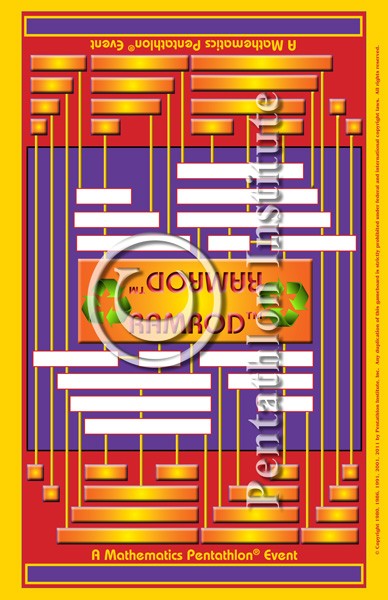 RAMROD™
RAMROD™
The game of Ramrod combines the ability to know all facts for each number family with strategic thinking. Cuisenaire rods and a gameboard that connects rectangular (sum) boxes composed of different metric lengths provide the setting for students’ active investigation of addition and subtraction, measurement, algebraic thinking, estimation, spatial reasoning, and inductive and deductive thought. In this chess-like game students must plan ahead to network “RAMROD” (addend) combinations of two rods that complete a rectangular (sum) box length in the playing area of the gameboard. Such (addend) combinations result in captures that relate to the game goal of being the first to complete their 24 cm Goal.
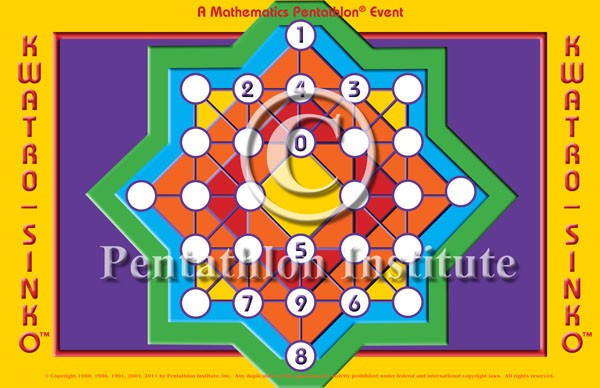 KWATRO-SINKO™
KWATRO-SINKO™
Computational and spatial reasoning as well as algebraic thinking are required in this alignment game where chips are moved along the gameboard’s connected horizontal, vertical, and diagonal pathways. One player has five even-numbered chips and the other, five odd-numbered chips. The goal of the game is to create a spatial and numerical alignment that results in an answer of four or five. To play this game effectively students must know many number sentence combinations of adding two even chips and subtracting an odd numbered chip (or vise-versa) to get an answer of four or five.
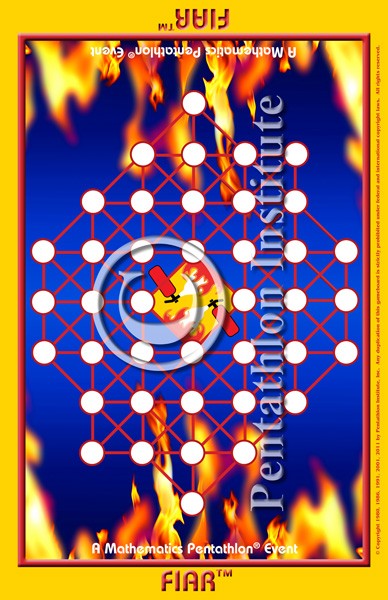 FIAR™
FIAR™
This alignment game requires students to use spatial reasoning and observation skills to visualize many possible options for moving chips along the gameboard’s connected horizontal, vertical, and diagonal pathways. While the rules to this game are simple, the development of strategies to set up structural situations that construct winning paths and block opponent’s paths are quite challenging.
THE ESSENTIAL RESOURCES
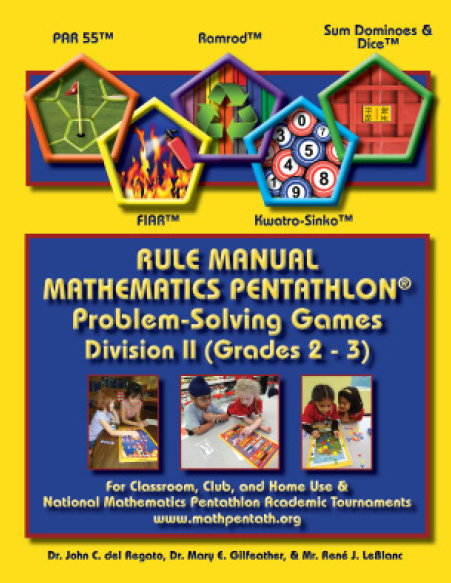
The Rule Manual for Mathematics Pentathlon Problem Solving Games Division II (Grades 2-3) is a Full-Color publication that provides the Official Rules for each of the 5 Mathematics Pentathlon Games including: Background/History of the Game, Materials, Goal, How to Start the Game, Underlying Math/Science, Basic Rules, and Game Specific Tournament Rules. This detailed Manual also illustrates and describes the recommended Team Grouping for Cooperative Learning and Good Sportsmanship. In addition, a detailed Introduction defines Active Problem Solving and the many critical characteristics and philosophy of the Math Pentathlon Program. A Math Content & Standards Chart for the entire Math Pentathlon Program is outlined on the Inside Back Cover.
The Guide for Teaching and Sequencing the Mathematics Pentathlon Program Division III (Grades 2-3) is a Full-Color step-by-step Teaching Guide that coordinates the Program’s three key resources: the Games and Rule Manual, the Adventures in Problem Solving Book I, and the Investigation Exercises Binder I. Organized into Monthly Lesson Plans each Guide outlines four lessons per month for weekly implementation. Each lesson describes necessary materials, approximate lesson time, resources with corresponding page numbers, and a summary of each activity with related illustrations.
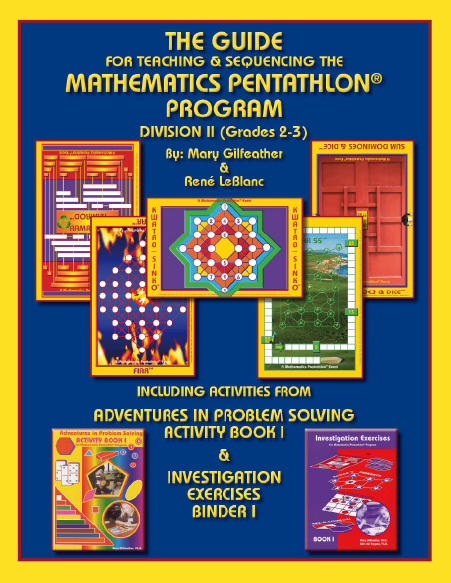
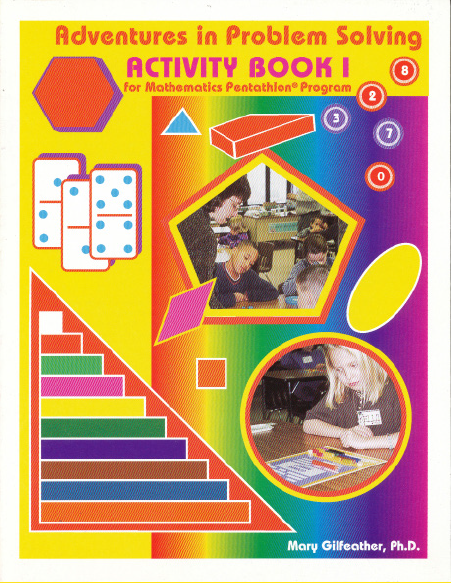
Adventures in Problem Solving Activity Book I (Grades K-3) links the Mathematics Pentathlon® series of games with the mathematics curriculum. The numerous activities and projects described in this book guide teachers/coaches to explore with their students important geometric, numerical, and scientific relationships. This publication also helps teachers to coordinate the games with mathematics content/process objectives. In addition, many introductory activities are described that develop prerequisite skills for being successful in playing the Mathematics Pentathlon® games and developing related problem-solving strategies. Both the Mathematics Pentathlon® Games and Adventures in Problem Solving Book I activities make use of a wide variety of concrete and pictorial models that help students understand and remember important mathematical concepts.
Investigation Exercises Book I (Grades K-3) is the assessment resource for the Mathematics Pentathlon®Program . For many years educational leaders have advocated the use of assessment instruments that go beyond the minimal expectancies of standardized testing procedures. Such conventional instruments evaluate students’ ability to memorize information in unrelated situations. When teachers “teach to the test” students often use only short-term memory tactics to cope. The Mathematics Pentathlon® Games require a dynamic form of thinking that cannot be assessed with conventional instruments. Investigation Exercises Book I complements the Mathematics Pentathlon® Games and Adventures in Problem Solving activities by providing numerous nonconventional paper-pencil ideas for assessing students’ understanding of mathematical relationships/skills that directly relate to the games/activities. This publication also encourages students to critically examine various game-playing options and choose strategic moves.
